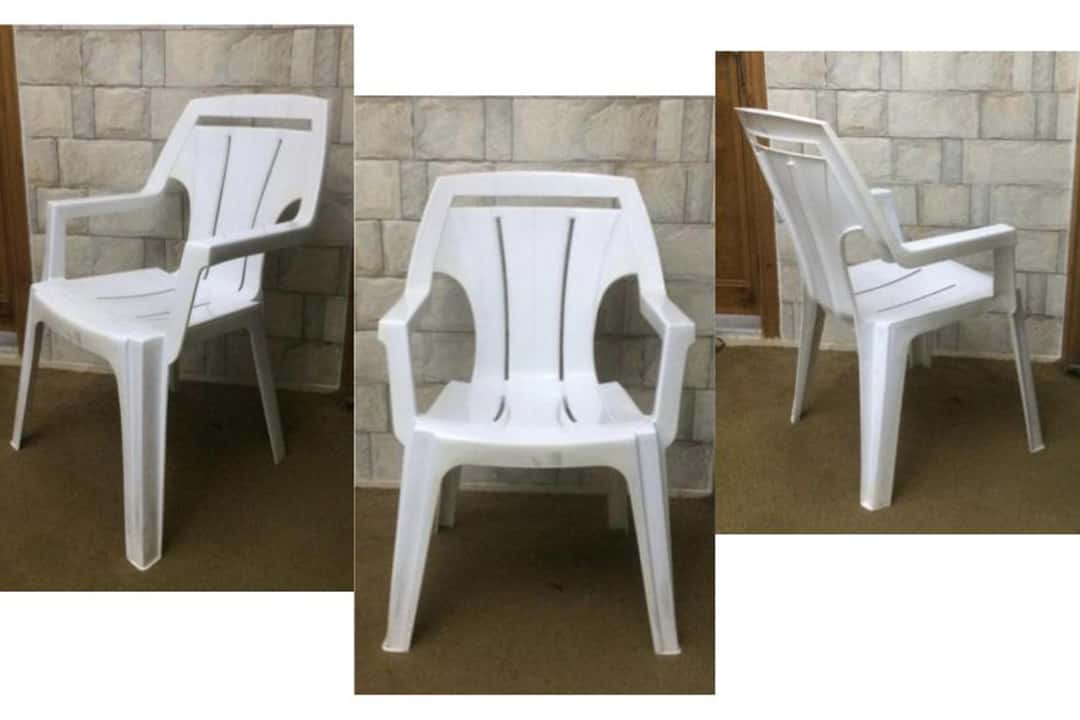During this fall’s final exam season, I was scrolling through my camera roll when I landed on an old photo of me at my grandparents’ house in Jordan. Visible in the corner of the photo was a plastic white chair — the kind with convenient armrests and slits at its back that allow it to withstand almost any sort of weather. It’s also the kind of chair that could probably be stacked miles high and is perpetually covered in a thin layer of dust, regardless of how frequently it is used.
According to the internet, this chair is officially known as the Monobloc chair. Designed in 1946, the Monobloc chair gets its name from the means of its production; instead of assembling it from multiple pieces, the chair’s manufacturer injects a material called virgin thermoplastic polypropylene into a mould. This makes the production process quick and cost-effective — and very dangerous for the environment, but we’ll get to that later.
Now, this might sound silly, but when I saw that plastic white chair, I teared up a little bit. You could argue that those tears were symptoms of the stress and sleep deprivation that often accompany final exam season, but I also believe that they were a symptom of my homesickness.
I’m from Jordan, and those stupid plastic chairs are present in all my memories of living there. They were present at the weddings and funerals I attended; in my grandfather’s kitchen where he would treat my cousins and me to homemade hummus and falafel; and on the terraces where, late into the night with my aunts and uncles, I would indulge in eating sunflower seeds and discussing conspiracy theories.
During olive picking season, I would balance on those plastic chairs to reach the highest branches, and when I went to get my passport photo taken, the photographer gave me one of those chairs to sit on. The same chairs lie abandoned by little children in parking lots or outdoor swimming pools, and they accommodate street vendors near old downtown Amman. They line everything from the shoreline of the Dead Sea to the entrances of cheap cafés where people get together for an afternoon coffee. In Jordan, Monobloc chairs are everywhere, and based on conversations with friends and my exposure to Arab television, it would seem as though the omnipresence of the Monobloc chair extends to other parts of the Middle East.
Despite how ugly Monobloc chairs are, they have been able to blend in with their surroundings and become a charming part of Middle Eastern culture — at least in my view. It’s similar, I think, to the way that windmills, tall and protruding, have become almost a romantic feature of the landscapes in Cape Cod or Switzerland. The main difference between these two inventions would be the fact that while windmills are meant to save the environment, Monobloc chairs do the opposite; their effects on the environment are pretty devastating, as is the case with any object that cannot be recycled easily and is produced on a massive scale. In the case of the Monobloc, we’re talking billions of chairs produced since 1946.
Monobloc chairs are so mass-produced and ubiquitous that they have been dubbed “context-free,” meaning that they give absolutely no indication as to what the place they are found in might be — from a Toronto suburb to the centre of Beirut, it’s apparently anyone’s thatguess where a Monobloc chair could appear. In fact, I stumbled upon a blogger who pointed out that there is even a Flickr album called “Those White Plastic Chairs” documenting this context-free phenomenon that includes over a thousand photos taken in countries worldwide.
I’ll admit, I was surprised to learn about this Flickr album and the ubiquity of the Monobloc chair. I’m not sure if I was just exercising selective memory, but I could not remember seeing this sort of chair anywhere in Canada — even so, I don’t know why that was enough reason for me to believe that this particular kind of plastic chair had any unique relationship to the Middle East.
If this were an article written for The Onion, it would be titled, “Girl Discovers That Plastic Chairs Can Sometimes Exist In Places,” but since it isn’t, I’ll say this: I think my romanticization of a generic plastic chair during a moment of homesickness points to how cultures are influenced by globalization — what else could you call it when the same plastic chair embeds itself into the setting of virtually every single country on the face of this Earth? Moreover, I’m a little concerned that my view of my own culture, one with such a long and beautiful history, has been artificially influenced to this extent by globalization.
Given this, I’m now trying a little harder to learn more about some of the more substantial features I can attribute to my Jordanian and Middle Eastern cultural heritage. I’ve started by looking through the works of a bunch of pre-Islamic poets, but half of it just goes over my head. Maybe I don’t need to go that far back — maybe my versions of Jordan and the Middle East, which exist in the globalized present, are still valid.
Beyond the plastic chairs, other features of the landscape remain distinct. Maybe this association is less about those plastic chairs and more about the people who moved around them — the people who reflect my cultural heritage through the language they speak and their sense of humour, even if the dialect has changed and their jokes now include references to modern cinema.



No comments to display.